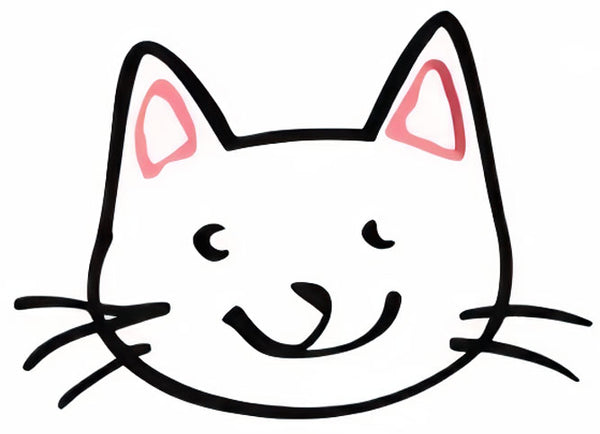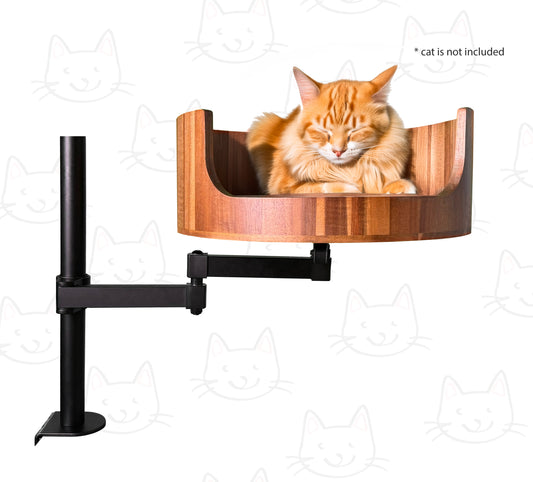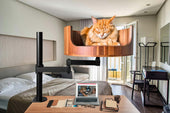
Tail Wagging Cat: Understanding Feline Behavior
Share
Tail Wagging Cat: Understanding Feline Behavior explores the mysterious and often misunderstood world of cat behavior. Many people are familiar with the sight of a dog wagging its tail, but what about when a cat starts to wag its tail? This behavior may seem confusing at first, but it actually holds valuable clues about your feline friend's emotions and well-being.
In this article, we will delve into the reasons behind a cat's tail wagging, from excitement and playfulness to stress and aggression. We will also discuss how to interpret other subtle signs of feline body language, such as ear position, pupil dilation, and vocalizations. By understanding these cues, cat owners can better communicate with their pets and build a stronger bond based on trust and mutual understanding. So, whether you have a curious kitten or a seasoned senior cat, this article will provide valuable insights into the complex and fascinating world of feline behavior.
1. Cats wag their tails as a form of communication, signaling their emotions and intentions to their owners.
2. Understanding the nuances of tail wagging can help pet owners better interpret their feline's mood.
3. Different tail movements can indicate feelings of curiosity, aggression, playfulness, or contentment.
4. It is important to pay attention to other body language cues in conjunction with tail wagging to get a complete picture of your cat's behavior.
5. By observing and interpreting your cat's tail movements, you can deepen the bond and communication between you and your furry companion.
## Understanding Feline Behavior
Feline behavior is complex and can be influenced by a variety of factors including genetics, environment, and past experiences. It is important for cat owners to understand their pet's behavior in order to provide the best possible care and environment for them. Cats communicate primarily through body language, vocalizations, and behaviors such as tail wagging. Tail wagging can indicate excitement, fear, aggression, or playfulness depending on the context.
## Types of Tail Wagging
There are several different types of tail wagging in cats, each with its own meaning. A slow, gentle tail wag can indicate relaxation and contentment, while a rapid, aggressive tail wag may suggest that the cat is feeling threatened or annoyed. Cats may also wag their tails in a playful manner, often accompanied by other playful behaviors such as pouncing or chasing. It is important for cat owners to be able to interpret their cat's body language and tail wagging in order to understand their pet's feelings and needs.
## Case Studies
To better understand the complexities of feline behavior and tail wagging, researchers often conduct case studies involving real cats in various environments and situations. By observing and analyzing the behavior of these cats, researchers can gain insights into the reasons behind certain behaviors and how they can be interpreted. Case studies can also help cat owners apply this knowledge to their own pets and improve their understanding of their cat's behavior.
## Behavioral Training and Management
For cat owners dealing with problematic behaviors such as aggression or anxiety, behavioral training and management can be helpful. Techniques such as positive reinforcement, desensitization, and counterconditioning can be used to modify unwanted behaviors and promote positive interactions between cats and their owners. By working with a veterinary behaviorist or animal behavior specialist, cat owners can learn effective strategies for managing their pet's behavior and improving their overall well-being.
## Conclusion
Understanding feline behavior, including tail wagging, is essential for providing the best possible care for cats. By learning to interpret their pet's body language and behaviors, cat owners can develop stronger bonds with their pets and create a safe and enriching environment for them to thrive in. Continued research and education in the field of feline behavior can further enhance our understanding of these fascinating creatures and improve the lives of cats everywhere.
Frequently Asked Questions
How can the Desk Cat Nest help with my tail wagging cat?
The Desk Cat Nest provides a cozy and secure space for your cat to relax and feel safe. By providing a comfortable environment, it can help reduce stress and anxiety in your cat, which may be contributing to the tail wagging behavior.
Is the Desk Cat Nest easy to assemble?
Yes, the Desk Cat Nest is designed to be easy to assemble with no tools required. Simply follow the provided instructions to set it up in no time.
Will my cat fit comfortably in the Desk Cat Nest?
The Desk Cat Nest is designed to accommodate most cats, with a spacious and plush interior for maximum comfort. However, it is always a good idea to measure your cat's size before purchasing to ensure a proper fit.
Can the Desk Cat Nest be easily cleaned?
Yes, the Desk Cat Nest features removable and washable cushions for easy cleaning. Simply unzip the cushions and wash them according to the care instructions provided.
Will my cat use the Desk Cat Nest?
While we cannot guarantee that every cat will immediately take to the Desk Cat Nest, cats generally enjoy having their own cozy space to retreat to. Placing familiar toys or treats inside the nest can also encourage your cat to use it.
In conclusion, the Desk Cat Bed is a valuable choice for tail-wagging cats as it provides a comfortable and secure space for them to rest and relax. With its sturdy construction and plush cushioning, this bed offers the perfect blend of support and coziness that cats love. By giving your feline friend a designated spot to curl up and unwind, you can help reduce stress and anxiety, leading to fewer instances of tail-wagging behavior. Invest in a Desk Cat Bed today and give your furry companion the ultimate sleeping experience they deserve.



















































